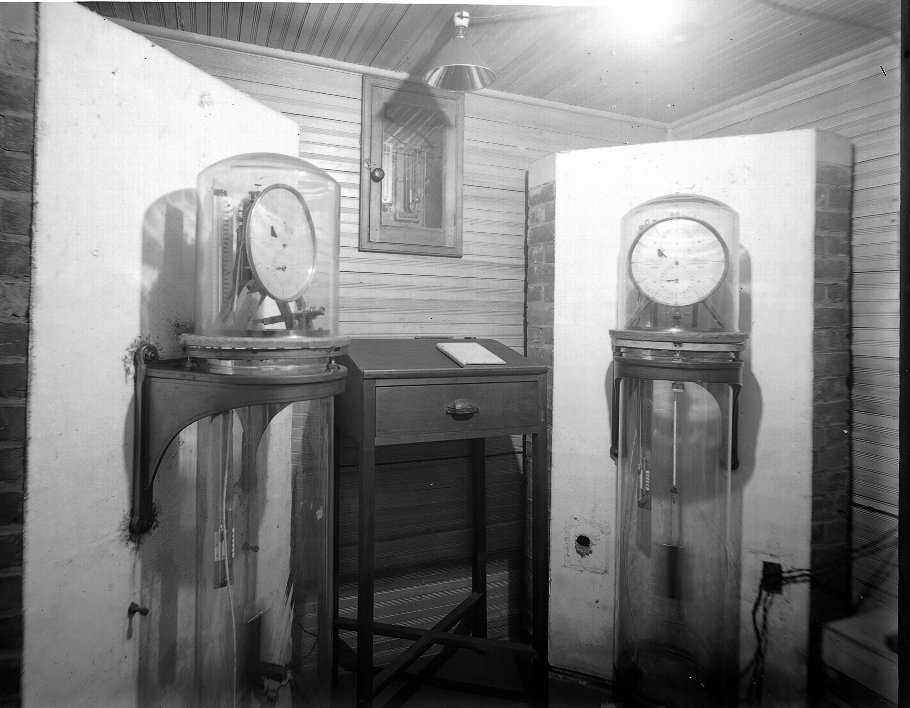Precise Time Department
The U.S. Naval Observatory has maintained a Time Service Department since 1880. At right are a pair of Reifler precision pendulum clocks, photographed in their underground vault c. 1910.
Today, USNO's Precise Time Department is charged with maintaining the DoD reference for Precise Time and Time Interval (PTTI). That reference is UTC(USNO). This time-scale is determined by an ensemble of dozens of atomic frequency standards, popularly called "atomic clocks", which are continuously scanned, selected, and averaged by computer to provide a day-to-day precision measured at the picosecond (10-12 seconds) level per day.
USNO Master Clock
The DoD
common time reference is the U.S. Naval Observatory Master Clock. It is
generated at USNO in Washington, D.C. and at the Alternate Master Clock Facility at Schriever Space Force Base in Colorado.
GPS
USNO
monitors the Global Positioning System (GPS) constellation and provides
system timing offsets to the U.S. Space Force 2nd Space Operations
Squadron (2SOPS), timing data for individual GPS satellites, and time
transfer services using GPS.
NETWORK TIME SYNCHRONIZATION
USNO provides authoritative network time synchronization via the Network Time Protocol (NTP).
Two-way satellite time transfer (TWSTT)
The
highest precision and accuracy in time dissemination is provided through
Two-Way Satellite Time Transfer (TWSTT). USNO provides operational
time transfer and calibration services for TWSTT.
Telephone Time
USNO provides both voice announcements of the time, and services to synchronize systems over telephone modems.
Research
USNO is
in the forefront of developing robust, continuously running atomic
frequency standards. Our Clock Development Division has designed,
built, and deployed six rubidium fountain clocks
which have been operating continuously since 2013. The team is now
investigating optical frequency standards, which will operate at
frequencies some five orders of magnitude higher than the current
microwave standards.
https://www.cnmoc.usff.navy.mil/Our-Commands/United-States-Naval-Observatory/Precise-Time-Department/
No comments:
Post a Comment